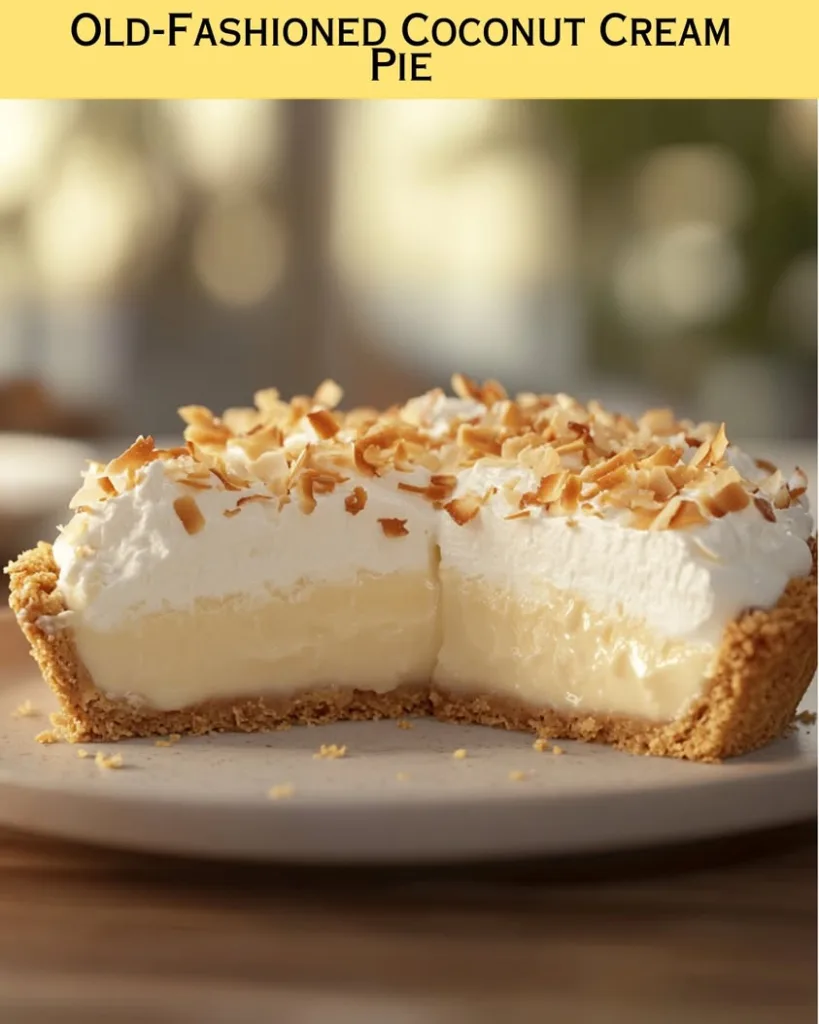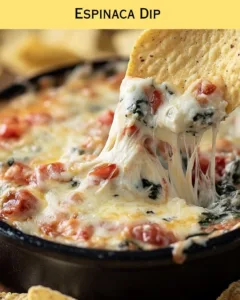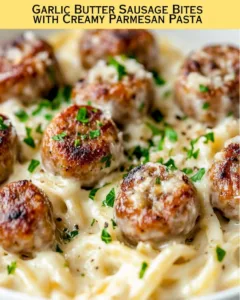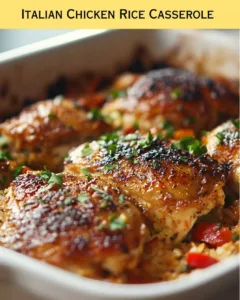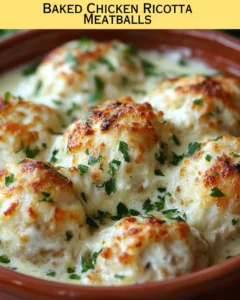Old-Fashioned Coconut Cream Pie: A Classic Dessert Delight
The Old-Fashioned Coconut Cream Pie embodies a nostalgic appeal, transporting you to simpler times with every creamy bite. Imagine slicing into a perfectly baked, flaky crust that cradles a rich, luscious coconut filling. The refreshing tropical notes of coconut tease your taste buds while a delicate layer of whipped cream adds an airy, playful touch. This dessert is more than just a treat; it’s a dish savored at gatherings, a slice shared among loved ones, promising to create memories with its classic flavor profile.
Crafted with care, this recipe showcases the beauty of traditional desserts. The harmonious blend of sweet coconut, silky cream, and smooth vanilla evokes a delightful balance of taste and texture. Each element plays its part, ensuring that the Old-Fashioned Coconut Cream Pie stands out as a true masterpiece in the world of desserts. Perfect for any occasion, this pie makes an unforgettable addition to birthdays, holidays, or a simple family dinner.
Quick Recipe Highlights
- Flavor Profile: This pie features a sweet and creamy coconut flavor that delights the palate, with hints of vanilla and a slightly nutty tone.
- Texture: The contrast between the creamy custard filling, flaky crust, and whipped topping provides a delightful mouthfeel.
- Aroma: The warm aromas of toasted coconut mingle enticingly with the sweetness of cream and vanilla.
- Visual Appeal: A beautifully presented pie, garnished with shredded coconut and a dollop of whipped cream, is sure to impress.
- Skill Level Needed: Intermediate cooking skills will help you tackle this recipe, especially with mastering the pie crust and filling.
- Special Equipment: A pie dish, mixing bowls, a whisk, and a stovetop are essential for this recipe.
Recipe Overview
- Difficulty Level: This recipe is rated as medium, as it requires some attention to detail but is accessible for most home bakers.
- Category: This Old-Fashioned Coconut Cream Pie falls under desserts, serving as a fantastic sweet conclusion to any meal.
- Cuisine: Traditional American cuisine is the hallmark of this recipe, influenced by the popular use of coconut in mid-century desserts.
- Cost: The approximate cost of this pie is affordable, primarily depending on the price of coconut and cream in your region.
- Season: Ideal for year-round enjoyment, this pie is especially appealing during summer gatherings, thanks to its refreshing flavor.
- Occasion: Perfect for celebrations, potlucks, or family get-togethers, this pie brings joy to any table.
Why You’ll Love This Recipe
This Old-Fashioned Coconut Cream Pie offers an irresistible taste and texture that will charm anyone who tries it. The creamy coconut filling is a delightfully sweet experience that envelops your senses, while the flaky crust provides just the right amount of crunch. Each bite is a splendid journey through creamy goodness that lingers, leaving you craving more.
Preparation for this pie is straightforward, making it both convenient and rewarding. The easy-to-follow steps guide you through creating a delightful dessert that can be prepped ahead of time, saving you stress during busy days. With minimal ingredients and clear instructions, even novice bakers can feel like pros in the kitchen.
Nutritionally, coconuts offer several health benefits, including healthy fats and fiber, making this dessert a balanced treat when enjoyed in moderation. Additionally, the use of fresh ingredients enhances the nutritional profile and flavor of the dessert, connecting you to the essence of home baking.
This pie is not just about dessert; it’s about creating memories and sharing moments. It’s perfect for gatherings where you can serve generous slices among friends and family, sparking conversations and laughter while indulging in a delicious treat. Imagine bringing this beautiful pie to a picnic or a holiday meal, and watch as everyone gathers around to enjoy a slice.
Cost-effectiveness also makes this recipe appealing; it uses easily accessible ingredients that won’t break the bank. You can create a stunning dessert that fills your home with warmth and charm without spending a fortune.
Historical Background and Cultural Significance
The origin of Coconut Cream Pie can be traced back to the early 19th century when coconut became popular in American baking. Initially introduced to American households through various tropical imports, coconuts began appearing in recipes as a symbol of exotic luxury. As recipes developed, the coconut pie emerged as a favorite among desserts, particularly in the South, where coconut was celebrated for its sweetness.
Culturally, Coconut Cream Pie has held a special place in American culinary tradition. It often graces the tables of significant events, reflecting the communal spirit of gathering around dessert. Over the decades, this pie has evolved into a classic dish that evokes nostalgia, signaling family bonds and cherished memories.
Variations of coconut cream desserts exist in different cultures, showcasing local ingredients and adaptations. For instance, in the Caribbean, coconut is celebrated not just in pies but in countless desserts and dishes, illustrating the versatility of this beloved fruit. Such cultural adaptations highlight how traditional recipes can bridge culinary boundaries.
As this recipe has evolved, numerous renditions arose, each contributing to the legacy of the Coconut Cream Pie. From using different types of crusts to incorporating various flavors, the fundamental concept remains centered around the creamy coconut filling, making each version a delightful twist on a classic favorite.
Ingredient Deep Dive
Coconuts have a rich cultural significance, particularly in tropical regions where they are a staple. Not only do they add flavor and sweetness to dishes, but they’re also celebrated for their versatility in both sweet and savory recipes. Nutritionally, coconuts are high in dietary fiber, and healthy fats, and can provide essential minerals such as magnesium and potassium. When selecting coconuts, look for those that feel heavy for their size, indicating maturity and moisture.
Another key ingredient is heavy cream, which is essential for creating the rich filling. Heavy cream has a high-fat content, which makes the pie decadent and luxurious. It’s crucial for the overall texture of the filling, providing a smooth and rich mouthfeel. Always choose fresh heavy cream without additives for the best results. When storing heavy cream, keep it refrigerated and consume it before its expiry date.
Sugar is another important ingredient, contributing the necessary sweetness to balance the flavors. Different types of sugars can be substitutes; for example, you can use coconut sugar for a unique flavor profile. Store sugar in a cool, dry place to maintain its freshness.
Finally, the flaky pie crust provides a base structure for this pie. You can use store-bought or homemade crust, depending on your time constraints and preferences. When preparing a crust, keep it chilled before baking to achieve that perfectly flaky texture. For the best results, store leftover crust dough in the refrigerator or freezer.
Common Mistakes to Avoid
- Overcooking the filling: This can lead to a grainy texture instead of a smooth, creamy custard. To avoid this, cook the mixture just until it thickens.
- Skipping the chilling step: Allowing the pie to cool completely in the refrigerator is crucial for the filling to set properly.
- Not blind baking the crust: Blind baking helps achieve a crisp crust. Failing to do so can result in a soggy bottom.
- Using warm ingredients: Starting with cold or room-temperature ingredients can help you achieve a smoother filling. Warm ingredients can create lumps in your custard.
- Incorrect measuring: Accurate measurements are essential for success, particularly in baking. Be sure to use proper measuring tools and techniques.
- Not toasting coconut: Toasting enhances the coconut flavor and adds texture. Skipping this step can result in a less intense coconut taste.
- Rushing the pie assembly: Take your time to layer the ingredients and ensure equal distribution for balanced flavor.
- Serving too soon: Patience is key; serving the pie too early can lead to a messy presentation.
- Using stale or expired ingredients: Always check the freshness of your ingredients before beginning your baking adventure.
- Not tasting the filling before filling the crust: Always taste your filling to adjust sweetness or flavor before pouring it into the crust.
Essential Techniques
To blind bake a pie crust successfully, preheat the oven and line the crust with parchment paper, filling it with pie weights or dried beans. This technique prevents the crust from puffing up during baking. When you see a lightly golden edge, you’ve achieved the right level of doneness.
Whipping cream is another critical technique; ensure your mixing bowl and beaters are chilled. Start on low speed to blend and then gradually increase to medium-high speed until stiff peaks form. Avoid over-whipping, as this can lead to butter formation.
Making a custard requires careful heat control to prevent keeping the mixture naturally smooth. Stir consistently over medium heat, and look for a coating on the back of the spoon as a sign of doneness. Letting it cool slightly is also advantageous for texture.
Strategically incorporating coconut flavor transforms your cream pie into a delightful experience. Use both shredded and toasted coconut in the filling for a more complex flavor profile, paying attention to balance for a holistic flavor culmination.
Finally, assembling the pie may appear simple but requires attention to layering. Start with a layer of coconut filling, followed by whipped cream, and top with more coconut. Ensuring an even spread across the crust guarantees each slice shines.
Pro Tips for Perfect Old-Fashioned Coconut Cream Pie
Firstly, always choose fresh, high-quality ingredients for the best flavor. Using fresh coconut rather than packaged can elevate the taste immensely.
Secondly, when preparing the crust, chilling the dough for at least 30 minutes can prevent shrinkage during baking. This technique allows for stronger, more structured crust formation.
Always taste your filling before pouring it into the crust; this allows you to adjust sweetness or coconut intensity for desired flavor.
Another tip is to layer whipped cream generously; it not only enhances presentation but also adds luxurious texture to each serving.
When storing the pie, place parchment paper between the pie and the container lid to prevent moisture buildup on the crust.
To impress guests, add a sprinkle of toasted coconut and chocolate shavings on top before serving. This will enhance visual appeal and create a rich taste contrast.
Lastly, encourage early diners to take just one slice at a time; the initial coldness will maintain texture while allowing the custard to settle for optimal experience.
Variations and Adaptations
You can adapt this classic pie in various ways; for example, consider adding a layer of chocolate ganache beneath the coconut filling for a heavenly chocolate-coconut fusion.
For seasonal adaptations, incorporate fresh berries during summer, merging vibrant colors with coconut for delightful presentation.
If you need to cater to specific dietary requirements, gluten-free crusts made from almond flour or gluten-free blends can be used without sacrificing flavor.
For a twist on texture, you could incorporate coconut whipping cream, replacing heavy cream for a lighter finish.
Flavor variations such as macadamia nuts can add a crunchy texture while embracing tropical notes that pair beautifully with coconut.
When presenting, try serving individual mini coconut pies in small jars; this not only provides unique presentation but also simplifies portion control.
Serving and Presentation Guide
To achieve a stunning presentation, cut clean slices with a warm knife, ensuring that each piece maintains the crust and filling structure.
Garnishing the pie with a dollop of freshly whipped cream topped with toasted coconut adds a sophisticated touch.
Consider serving with fresh pineapple slices or a tropical fruit salad to complement the coconut flavors beautifully.
Modern serving suggestions include plating with a drizzle of caramel sauce and a sprig of mint to elevate the overall visual aesthetic.
Temperature considerations also play a role in serving; the ideal serving temperature is slightly chilled, allowing the flavors to meld while maintaining texture.
Lastly, aim for portion control; offering petite slices encourages guests to savor each bite and allows for multiple servings, making this pie a perfect addition to any dessert table.
Wine and Beverage Pairing
When pairing wine with Old-Fashioned Coconut Cream Pie, consider a late-harvest Riesling. Its natural sweetness harmonizes with the pie’s flavors, elevating the experience.
For non-alcoholic options, iced coconut water infused with lime serves as a refreshing contrast to the rich pie, complementing the flavors beautifully.
Pairing with a light herbal tea, such as chamomile or mint, enhances the tropical nature of the dish while cleansing the palate.
When serving coffee, try a medium roast with chocolate notes; the coffee’s acidity balances the sweetness of the pie while enhancing the coconut flavor.
Temperature-wise, ensure that all beverages are served chilled or freshly brewed to complement the pie’s refreshing tropical qualities.
Finally, offering a dessert liqueur such as coconut cream liqueur served over ice can create a decadent after-dinner delight that pairs perfectly with leftover pie.
Storage and Shelf Life
Proper storage of your Old-Fashioned Coconut Cream Pie will ensure its longevity and flavor. After it has cooled completely, cover it loosely with plastic wrap to prevent moisture loss.
Store the pie in the refrigerator, where it can last for about 3-4 days. Avoid keeping it at room temperature for extended periods to maintain texture and safety.
If you have leftovers, carefully remove the topping and store it separately to prevent the crust from becoming soggy; this ensures that each slice retains its delightful crunch.
The signs of spoilage can include an off smell or changes in color in the filling or crust. If in doubt, it’s best to discard it.
Reheating this pie isn’t necessary; serve it cold for the best texture. However, if desired, you can warm individual slices in the microwave for about 10-15 seconds.
Freezing is another option for long-term storage, but be sure to freeze the pie without the whipped cream topping; it can last in the freezer for up to 2 months. Wrap it tightly in aluminum foil and place it in a freezer-safe container.
Make Ahead Strategies
To make your Old-Fashioned Coconut Cream Pie ahead of time, consider preparing the crust a day in advance. Store it in the refrigerator until you’re ready to fill it.
The filling can also be made a few hours beforehand. Once cooled, pour it into the pre-baked crust and chill until set for the best texture and flavor.
You might even make the whipped cream ahead of time and store it separately in an airtight container. Just be sure to give it a gentle stir before spreading it over the pie.
For assembly, plan to introduce fresh elements just before serving; adding toasted coconut can elevate flavor and presentation while ensuring freshness.
Lastly, create a timeline for your pie prep. Identify which components you can prepare the day before, allowing for minimal stress on the day of serving.
Scaling Instructions
If you’d like to halve the Old-Fashioned Coconut Cream Pie recipe, each ingredient can easily be divided by two. This is perfect for smaller gatherings or dessert tastings.
When doubling or tripling the recipe, use larger mixing bowls and consider baking in multiple pie dishes to maintain even cooking. Keep an eye on cooking times, as larger quantities may require additional baking.
Equipment adjustments may include larger mixing spoons and varying baking pans. Ensure that your oven has enough space for multiple pie dishes, or consider baking in batches.
Timing modifications will depend on your oven’s capacity; always monitor the doneness of the filling with visual cues like bubbling and color.
Storage considerations impact quantity; larger quantities of leftovers may require more refrigeration or freezer space. Always label items to keep track of what you have stored.
Nutritional Deep Dive
The macro breakdown of the Old-Fashioned Coconut Cream Pie includes a healthy dose of carbohydrates from the crust and sugar, along with fats primarily from the cream and coconut. This decadent dessert is intended to be savored in moderation due to its rich profile.
The micronutrient analysis reveals that the pie contains essential vitamins and minerals from coconut and heavy cream. While not a “health food,” it does provide certain beneficial fats, especially when made with real coconut.
Incorporating coconut into your diet can offer health benefits, such as improved digestion and energy supply due to the medium-chain triglycerides (MCTs) found in coconut products.
When considering dietary considerations, individuals should be mindful of their sugar intake and recognize that this pie is richer than standard dessert options.
Portion analysis is critical for enjoyment; a small slice can provide satisfaction without overindulgence. Serving size adjustments are encouraged to fit personal dietary needs.
For those managing weight, the key is to appreciate the flavors in moderation while incorporating this pie into a balanced diet.
Dietary Adaptations
For gluten-free diets, substituting a gluten-free pie crust is an effective way to enjoy this dessert without compromising on flavor. Almond flour or gluten-free baking mixes work well in creating a delicious base.
For those needing dairy-free options, coconut cream can replace heavy cream, ensuring the coconut flavors shine through while accommodating dietary needs.
Vegans can also adapt this recipe; substituting cream with a mixture of coconut and cashew cream, and using a plant-based pie crust, creates a delightful dessert that keeps the classic flavor intact.
Low-carb enthusiasts can play with the sugar content by employing erythritol or other sugar alternatives while still achieving a lovely sweetness without the calories.
Keto diets align well with coconut’s natural fats. By implementing low-carb options in the crust and avoiding sugars, fans of the keto lifestyle can indulge without guilt.
For paleo and other specific diets, focus on selecting whole, unprocessed ingredients for crust and filling; this enhances health benefits while maintaining that rich flavor.
Troubleshooting Guide
If you’re facing texture issues with the filling, ensure that you’re cooking it at a controlled temperature. High heat can lead to graininess or separation.
If flavors are off-balance, taste your filling before baking; adjust accordingly with sugar or vanilla to hit that perfect sweet spot.
For temperature problems, be careful with the baking time; underbaking can leave a runny filling, while overbaking can lead to curdling. Use a food thermometer for precision, aiming for around 170°F.
If you struggle with equipment challenges, consider a double boiler for smoother filling or a pie shield to protect the crust from burning.
Ingredient substitutions can lead to unexpected results; always be aware of how different ingredients interact, particularly sugars and fats.
Timing concerns can arise with larger quantities; plan for longer cooling times with thicker pies. Ensure you’re allowing enough time for setting to honor the texture.
Recipe Success Stories
Community feedback surrounding this Old-Fashioned Coconut Cream Pie has been overwhelmingly positive. Many bakers share their success stories, highlighting how well the pie has been received at family gatherings and celebrations.
Variation successes showcase the adaptability of this recipe; readers often report experimenting with flavors like chocolate or adding different nuts, only to find delightful outcomes.
Adaptation stories reveal how enthusiasts tweak the recipe to honor dietary restrictions, sharing their versions that stay true to the spirit of the original pie while embracing changes.
Readers suggest adding a hint of fresh lime zest to the filling for an enticing flavor twist, elevating it even further in their culinary adventures.
Photography tips abound, as those who have mastered this pie also reveal the best angles and lighting to capture the pie’s stunning presentation.
Frequently Asked Questions
Can I use dried coconut instead of fresh?
Yes, dried coconut can be used but calling for toasting it first enhances the flavor. Ensure it’s unsweetened for the best results.
How do I keep my crust from burning?
Consider using a pie shield to cover edges or reduce oven temperature if you notice it browning too quickly.
What’s the best way to slice the pie?
Warm your knife under hot water and wipe dry before slicing; this helps maintain the structure of each slice.
Can I freeze leftover pie?
Yes, store it in an airtight container but freeze without the whipped topping. It can last up to 2 months in the freezer.
How long does the pie need to set before serving?
Ideally, let the pie chill for at least four hours to ensure the filling is perfectly set.
Is there a way to make this pie dairy-free?
Absolutely! Substitute heavy cream with coconut cream or any non-dairy milk alternative, ensuring it’s unsweetened for the best flavor outcomes.
What’s the best way to store my pie?
Store it in the refrigerator uncovered for up to 3-4 days. Cover loosely after it has cooled to maintain crust texture.
How do I toast the coconut properly?
Spread shredded coconut on a baking sheet and bake at 350°F for 5-10 minutes, stirring frequently to avoid burning.
Can I make mini coconut cream pies?
Yes! Use a muffin tin to create mini pies, adjusting baking time for smaller servings.
How can I enhance the flavor of my cream filling?
Consider adding a splash of coconut extract or a dash of vanilla to mirror and deepen the coconut flavor.
Additional Resources
For those hungry for more, explore related recipes such as key lime pie or chocolate cream pie for delightful alternatives that echo similar textures and flavors.
Technique guides on mastering pie crust can elevate your baking skills, ensuring a flaky result every time. Take time to learn effective methods, as this is the foundation of any great pie.
Ingredient information centers around coconut products and their uses in various cuisines, enhancing your understanding and appreciation of this versatile fruit.
For those starting their baking journey, equipment recommendations can make a significant difference, focusing on the essentials needed for pie making.
Seasonal variations also allow you to explore how different fruits can bring a twist to classic recipes, keeping your dessert table fresh and exciting throughout the year.
Join the Conversation
Share your experience making this Old-Fashioned Coconut Cream Pie on social media; it’s a great way to connect with fellow bakers and share tips! Feel free to tag us with your creations.
Our photography tips guide can help you snap the perfect pie picture to showcase the stunning textures and layers, inspiring others to try their hand at this delightful dessert.
Engaging in recipe reviews allows you to voice your opinions and provide feedback, creating a community of enthusiasts who learn from each other.
Participate in discussions about variations; sharing personal twists on the recipe can spark new ideas and inspire others looking to adapt traditional dishes for modern tastes.
Your story matters – each experience helps strengthen our community. Join the conversation and let’s make baking enjoyable and creative together!
The Recipe
Old-Fashioned Coconut Cream Pie
Serves: 8 servings
Prep Time: 30 mins
Cook Time: 45 mins
Total Time: 1 hour 15 mins
Kitchen Equipment Needed
- Pie dish
- Mixing bowls
- Whisk
- Stovetop
- Measuring cups and spoons
- Parchment paper
- Pie weights or dried beans
Ingredients
- 1 pre-made pie crust
- 2 cups heavy cream
- 1 cup shredded coconut (toasted)
- 1 cup granulated sugar
- 1/2 cup cornstarch
- 4 large egg yolks
- 2 cups whole milk
- 1 tsp vanilla extract
- Pinch of salt
- Whipped cream (for topping)
Directions
- Preheat your oven to 350°F (175°C).
- Blind bake the pie crust according to package instructions. Once pre-baked, set aside to cool.
- In a saucepan over medium heat, combine the sugar, cornstarch, and salt.
- Gradually whisk in the milk and heat until simmering, stirring constantly until it thickens.
- In a separate bowl, beat the egg yolks. Slowly add a bit of the hot mixture to the yolks, whisking continuously.
- Pour the yolk mixture back into the saucepan and cook for an additional 2-3 minutes.
- Remove from heat and stir in the vanilla extract and toasted coconut.
- Pour the filling into the cooled crust, smoothing the top with a spatula.
- Cover with plastic wrap directly on the filling and chill in the refrigerator for at least 4 hours.
- Before serving, top with whipped cream and additional toasted coconut for garnish.
Recipe Notes
- For a different flavor, consider adding chocolate to the filling.
- Store leftovers in the refrigerator for 3-4 days.
- Feel free to experiment with toppings; crushed nuts or fruit can complement the coconut flavor.

